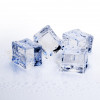DNA Day: Hacking Genomes and Storing Data
Interview with
65 years ago the journal Nature published Watson and Crick’s historic paper revealing the structure of DNA or, as James Watson himself puts it “the secret of life”. Since the time when he famously raced into the Eagle Pub in Cambridge in 1953 to announce what he and Crick had found, the science of molecular biology as it’s known has taken the world by storm: the NHS is busy reading the genetic codes of 100,000 patients, and scientists in America have announced an ambitious plan to sequence the DNA of all life on Earth. Katie Haylor's been taking a look at two other recent DNA developments...
Katie - The iconic double helix: it’s like an extravagant staircase with phosphate sugar railings and steps made from bases; either C paired with G or A paired with T. These bases code for amino acids, which make up proteins and these have whole range of functions in the body. 65 years on from publishing The Structure of DNA, scientists are now using this amazing molecule in a number of different ways. One way is to go in and disrupt, modify, or make additions to existing genetic material and, as well as coding for you and me, DNA could soon be coding for music
It’s not just humans that have DNA: plants, animals, even microorganisms have it too. And once inside cells, viruses can hack into the replication machinery of other organisms to make many copies of their own DNA, or DNA’s chemical cousin RNA. Now bacteria have evolved a clever defence mechanism against this invasion; they chop up the viral DNA that’s starting to invade. Known as CRISPR, this DNa manipulation technique has now been harnessed by scientists and is having an incredible impact across biology. Here’s Jonathan Pettit from the University of Aberdeen…
Jonathan - CRISPR gives us the power, for the first time, to make changes at will potentially to anywhere in an organism’s DNA. It means that we can remove genes, we can modify genes, we can add in genes wo we could, potentially, modify an organism and give it a gene that it’s never had before.
The key thing behind CRISPR is that an enzyme, which cuts DNA at a specific point. It uses a programmable sequence that we can engineer to target it to a specific piece of DNA and it works, essentially, like molecular scissors; it goes to the place we’ve targeted it to and it makes a cut in the DNA. It’s having an enormous impact in basic biological research because questions that we previously wouldn’t have been able to attempt are now open to us. And my own research, for instance, I work on nematode C. elegans, and it’s a brilliant model organism for doing genetics but we’ve long wanted to be able to remove lots and lots of genes at once. Previously, that’s not be technically possible and now we can do that, and the key issue with that is that we know, for lots of animals, they have backup copies of given genes. So if you have say 11 genes doing the same thing or doing overlapping things, you often don’t see the effect of those genes until you’ve removed all 11, and we can do that now with CRISPR.
One of the things I haven’t mentioned is that all enzymes are error prone and so we know that it will cut most effectively in the region we’re targeting it to, but there are also off-target effects. And obviously, if we’re going to use it in a human scenario in therapeutics, that would need to be solved.
Katie - CRISPR can, in theory, be used in any situation where you’d want to study how genes work, and this is having an enormous impact on, for instance, research into cancer caused by mutated genes. But what about the molecule of DNA itself: could it serve another function?
DNA is kind of like a biological suitcase; it’s a great natural storage device. After all, everything that’s needed to make you is in it. So if this molecule can store one type of data - genetic data - what about other types? The modern world produces data at an incredible rate, from your phone, your laptops, spreadsheets. You name it, it all has to be stored stored somewhere, and having the capacity to do so is becoming a problem as we operate increasingly data hungry lives.
So could DNA be the new harddisk? Well, this week the word’s out that scientists in Switzerland are working to store Massive Attack’s album, Mezzanine, in DNA. But it’s incredibly expensive so is DNA data storage a realistic option for the non-famous as well as the famous? I spoke to information theorist Jossy Sayir from Cambridge University and the European Molecular Biology Laboratory…
Jossy - The main advantage of DNA is that you’re storing data at the atomic level, so you’re storing data in a much denser fashion. You can potentially solve the world’s storage problem and replace huge data farms that occupy whole city blocks.
Katie - You first need to repair the data in a way that will allow you to retrieve it from DNA storage. Then you send off your request to a specialised company and they’ll synthesise the DNA you’ve asked for and send it to you. Then, when you need to retrieve the data, you first amplify the DNA, sequence it, and this is where the data is read. And, hey presto, you’ve got back your photo, or word document or, if you’re a world famous music group - album.
Jossy - It is a gimmick technology, and there’s nothing wrong with that, but there is potential in the future for this technology to become extremely important and competitive. For that, there should be significant drops in the costs of storing DNA and improvements in the speed of storing it and retrieving it. When that happens, there is potential for a huge industry to develop.
In all the other forms of storage or communication I’ve worked on, when you send data in a certain order it’s retrieved in that same order. In DNA that’s not the case, you put the data in a certain order and then it’s all stuck into a soup and, when you retrieve it, it comes back in a random order so that’s the sort of challenges I face. How do I prepare data in a way that when I retrieve it in a random order, I will still be able to give you back your photo, for example, without the pixels being all shuffled into a random order.
Katie - So that’s one challenge. cost and time are others. But some people, Jossy says, think that DNa storage could, potentially, safeguard some of humanity’s most valuable data.
Jossy - It’s the technological apocalypse scenario where, essentially, mankind will somehow self-destroy or, at least, lose all technological ability. There'll be new middle ages where we’ll basically go back to basic technologies, maybe because of a war. And so maybe, in a thousand years, we’ll have a new technological civilisation, they’ll come up with new methods of storage but they won’t necessarily develop the same methods we had, so they’ll never be able to retrieve our magnetically stored, or optically stored information.
However, they will have an incentive to learn about DNA because that is present in nature; that’s not something we’ve come up with. And hence, if we store our data using processes that mimic what happens in nature, the thought is that if they want to archive something really important that might survive this apocalyptic scenarios, DNA storage is an option for this. Even though it’s costly and slow, it may be worth going through that for mankind’s really valuable data.









Comments
Add a comment